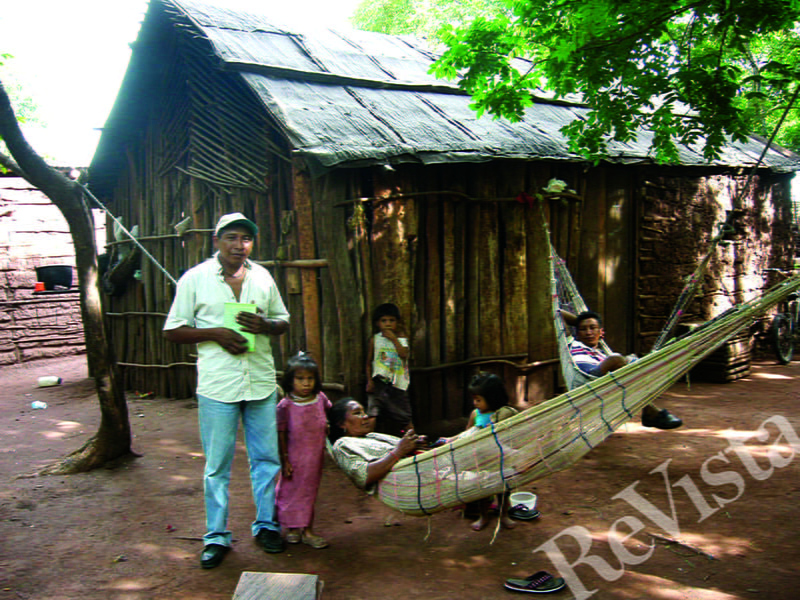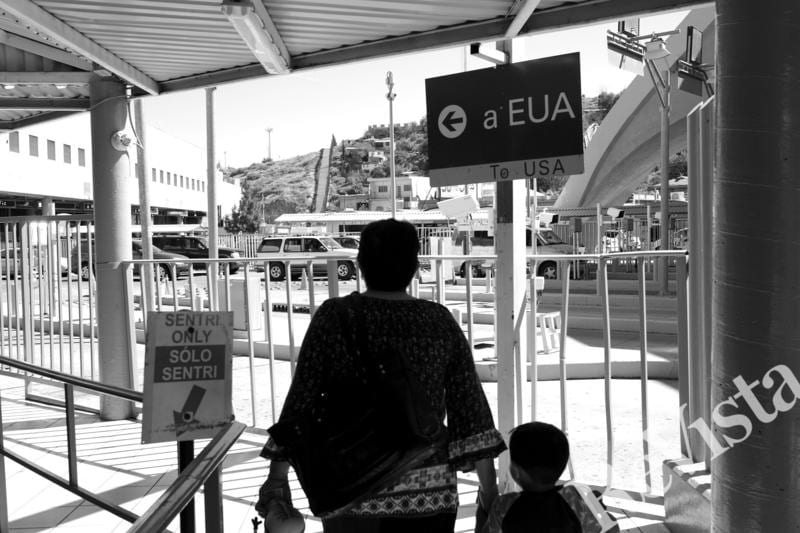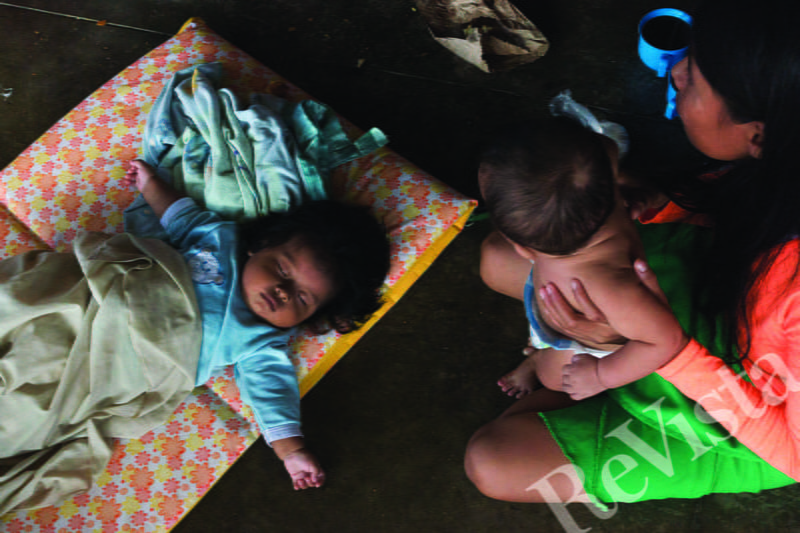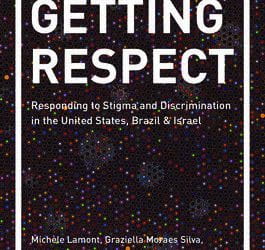Displacements: A First Take
Borders and the displacements they create are human artifacts.
Although only three percent of the world’s population are international migrants, mobility is an essential part of the human condition. From our earliest origins—approximately 200,000 years ago—human beings have moved across land and water, in larger numbers and across greater distances as the technical means enabling travel have permitted. Archeological and linguistic research attests to extensive, varied and intense migrations, originating out of the African continent and leading, over the ensuing centuries, to the hybrid, rich genetic intermingling that peoples the surface of the earth today.
When we think of migration control in today’s world, the images that might come to mind are razor wire fences, armed border guards, infrared body scanning devices and walls set up by states to keep others out. Yet the states that we take as given today—the primary source of our contemporary global migration control regime—are invented constructs, arbitrary mappings of people onto place. No inherent, let alone “natural,” order justifies this framework, which is evidence of nativist fear rather than national legitimacy, weakness rather than strength.
Migration control, the policing of nation-state borders through exclusionary laws and policies, is—from the vantage point of global history—extremely recent. Until the end of the 19th century, only severely stigmatized groups—criminals and prostitutes in particular—were systematically excluded from sovereign territories. Other persecuted minorities—Roma and Jews most obviously—were the targets of periods of intense discrimination, but these did not always lead to exclusion from the territory. While some measures resulted in expulsion by powerful sovereign polities, others led to confinement within the territory, to ghettoes encircled in particular areas within polities. Both these measures—exclusion and ghettoization—were, however, exceptions.
Indeed, until the early 20th century, population influxes were considered accretions to sovereign wealth and power, a welcome enhancement of domestic labor force and national entrepreneurial spirit. Much more egregious than limitations on and exclusions of human mobility, were their opposite: colonization by occupying and exploiting regions on the one hand, and forced importation of populations, most notably slaves and indentured laborers, on the other. This deep history highlights the arbitrary nature of current migration control regimes, and their implicit presumption that protecting national territory from “outsiders” or “others” or “illegals” is inevitable or inherently defensible.
Some state migration regimes are moving in a more inclusive direction, developing relatively open and positive measures toward human movement. A countervailing phenomenon to the entrenchment of the migration exclusion toolkit is the increasing spread of regional free movement regimes—first established in Europe but now also in evidence in West Africa and South America.
These regimes recognize that much human mobility has been driven by the search for opportunity—for new arable land and resources, or, when no “empty space” existed, for sites of conquest or possibilities of cooperation and cohabitation. But human mobility has also always been fueled by disaster—whether natural or man-made or both. People have been forced to embark on distress migration for their very survival, or to achieve more secure and rights-respecting conditions of life. This is the form of migration that we refer to as displacement—whether it is from one’s depopulated rural village to a job-rich, domestic metropolitan center in Mexico, or whether it is from a war zone in the Middle East to a refugee camp in a neighboring state or other destination involving international border crossing.
Displacement implies some measure of compulsion to leave home, when staying put, overwhelmingly the preferred default option, is no longer viable. But the division between opportunity and disaster-driven migration is neither clear-cut nor permanent, though the widely used popular dichotomy between “chosen” economic migration and “forced” refugee flight implies otherwise. The equally pervasive distinction between legal and illegal migrants, widely considered ontological categories, is also difficult to sustain on careful scrutiny. Both of these categorical distinctions are products of particular legal regimes and their intersection with personal circumstances. And they are both amenable to change. People may start their journey in search of opportunity and become refugees sur place, on the spot (consider the case of Honduran migrant workers after the 2009 coup), or vice-versa (think of anti-Castro Cubans). Migrants may enter a state with a legal immigration status such as “student” or “visitor” and overstay or violate the terms of their visa, moving from legal to illegal; conversely people may enter as undocumented migrants and benefit from a change in status such as an amnesty, the grant of a T visa as a survivor of trafficking, or an award of asylum status that renders them legal residents.
Where threats to survival are dramatic and imminent, human displacement takes the form of whole population exodus—the old, the young, the indigent and the sick accompanying able-bodied family leaders and breadwinners. We are sadly familiar with this phenomenon. After Syria, Colombia holds the record for the largest number of displaced persons in the world – approximately six million, equivalent to one out of every eight inhabitants. This scale of displacement has devastating consequences for the entire population, both those who are displaced and those who are not. It compounds the catastrophic impact of loss caused by the very high death toll, estimated at 220,000.
The material consequences of massive displacement on Colombians are most apparent: impoverishment, family separation, lack of access to basic resources such as food, health care, adequate shelter and education for the displaced, and overcrowding, increased competition for jobs and infrastructure overload for the non-displaced. But at least as searing is the affective legacy. Brutalization of communities, of families, villages and neighborhoods, leaves members traumatized, liable to terrifying flashbacks, to insomnia and anguished nightmares, to post-traumatic stress disorder and, for children, to bedwetting, fractured concentration, anxiety attacks, attachment disorders and other mental health pathologies. These products of exposure to violent conflict and ensuing displacement may endure for a lifetime, even for those only directly affected by war as very young children.
Because of the current dramatic humanitarian crisis halfway across the globe, in the Middle East, the Colombian displacement tragedy is sorely neglected. But the imperative of international attention is as urgent there as it is in Syria, a more recent conflict that bears much resemblance to past carnage in Colombia. Consider some of the similarities. Years of brutal conflict in Syria have generated the mass displacement of half the population of this highly sophisticated and relatively prosperous country of more than 24 million people. Those who have the means (whether their own or supplied by monied and diasporic relatives) buy forged visas and disguise the true purpose of their travel with elegant clothing, so that they are allowed to fly to safe destinations far from their homes, and then apply for asylum on arrival.
Those with less access to migration resources endure much harsher journeys—often multiple forms of internal displacement as a prelude to life-threatening international travel. Families pushing wheelchairs or gripping small children as they negotiate barbed wire at land borders, unstable dinghies in mid-sea or muddy mountain paths through policed territories have become one of the indelible images of the European recent refugee “crisis.”
Where social and political disintegration is more gradual, not the situation in Colombia or Syria, population displacements tend to be more piecemeal. Historically, young adults, most often males, have forged the path of exodus, in search of safety and means of survival—sometimes bringing family members to join them once they established themselves, sometimes relying on circular migration to maintain family ties, so long as mobility regimes permitted this. Eritrean, Afghan and Rohingya refugees are modern exemplars of this phenomenon. Sometimes, able-bodied males flee predatory enemy attacks, preparing to arm themselves and fight while their families act as buffers, absorbing the enemy onslaught as hostages, and enduring brutal physical and sexual violence. The infamous 1981 massacre at El Mozote during the Salvadoran civil war is a case in point.
Today, the opportunity for circular migration to complement temporary or changing personal mobility trajectories is largely the privilege of the wealthy and entitled. Corporate executives can move freely to and fro, as can wealthy students, trainees or visitors. Other populations are constrained by harsh migration control regimes which generate pressures towards permanent immigration or displacement, and militate against more flexible mobility arrangements. The situation in the United States is a clear case in point. Where once political, economic or environmental hardships precipitated selective and temporary mobility—for safety, for work, for opportunity—now militaristic border patrols and punitive immigration policies militate against circularity. As a result, Mexican, Central and Latin American migrant workers who might have been inclined to move between their families back home and their jobs in el Norte stay put, even when the economic situation or family circumstances do not warrant this. Millions thus become displaced, many of them caught in a limbo of illegality and insecurity and denied the opportunity to make use of flexible migration strategies which they once might have had.
Legal entrapment of this nature leads communities to despair of lawful family reunification and to embark on hazardous, irregular forms of border crossing to end separation. Thousands of Central American unaccompanied minors, whether through the maneuverings of exploitative coyotes or the self-propelled risks of transport on “La Bestia,” the transcontinental train that thousands have dangerously mounted to cross into the United States, have attempted to reunite with their undocumented parents in this way. The cumulative impact of drug wars, gang violence and state collapse in parts of Central and South America has exacerbated this pressure to embark on hazardous and forced emigration for very significant populations—inner city youth, family members left behind by breadwinners in the United States, displaced rural populations unable to see a survival strategy in gang-infested cities in Central America’s so-called Northern Triangle. Displacement has thus become the preferred survival option for a significant population of Latin Americans. In just over a decade, between 2000 and 2013, the size of the Central American population in the United States grew by over 56%, to a total of 3.2 million. The three tiny countries of the Northern Triangle—El Salvador, Guatemala and Honduras—thus represent 7% of the total U.S. immigrant population. Even more dramatic is the recent escalation in the numbers of unaccompanied children from this region arriving in the United States. In the 15 months between April 2014 and July 2015, more than 70,000 unaccompanied children from the Northern Triangle were stopped by the U.S. Customs and Border Protection at the southern U.S. border—74% of all unaccompanied minors thus apprehended. Starker evidence of the intolerable living conditions for this most vulnerable of populations back home is hard to imagine.
Among the millions of contemporary displaced persons, international legal regimes envisage protection for a relatively small minority. This protection is reserved for those who cross an international border and who can demonstrate a “well founded fear of persecution,” thus qualifying as refugees under the regime established by the 1951 UN Convention on the Status of Refugees (as amended). People who have not crossed an international border (those who are internally displaced, commonly known as IDPs) or those who, though displaced internationally, cannot demonstrate the requisite fear, are not generally entitled to international protection, though some regional legal systems afford a measure of protection. (MERCOSUR, UNASUR and the Cartagena Declaration are examples in the Americas.)
Special legal protections also apply to some demographic categories. Children in particular, defined in international law as persons under the age of 18, are entitled to have their best interests taken into account as a primary consideration in all matters affecting them—but only where the UN Convention on the Rights of the Child has been ratified by the relevant state. This is the case for the overwhelming majority of member states of the United Nations, including all Central and South American states. The United States, however, unlike every other northern or developed immigration destination state, is an egregious exception. Accordingly, U.S. officials, whether customs and border control officers at the border or law enforcement officials within the United States itself, are not bound by the “best interests” principle. This explains why Central American children continue to be detained in secure facilities when they enter the United States without a legal status, even when they are not charged with any criminal wrongdoing.
The prospects for legal status or meaningful international protection are much dimmer for the remaining majority of the displaced. They include the non-refugee displaced population—those trapped inside dangerous war zones or urban, arms-ridden deserts within their country; those considered mere “economic migrants”; those fleeing persecution because of their politics or sexual orientation but unable to access competent legal representation to prove their case; or those displaced en masse following a natural disaster (such as the recent Hurricane Matthew following the devastating 2010 earthquake in Haiti, Hurricane Mitch in Central America, the Chilean earthquake).
So much for legal access to protection. From the humanitarian perspective, the protection and assistance needs of these non-“refugee” populations are generally as great as the needs of populations holding legal refugee status. For the overwhelming majority of non-élite migrants, displacement may, at best, bring greater safety, some form of physical and psychological security and limited material assistance. This of course is the hope that motivates so many to risk so much: certain death in acute conflict is worse than the uncertain and risky prospect of survival.
However, all too often displacement brings with it new insecurities, vulnerabilities and traumas, compounding those already generated by the pressures to leave home. We know that displaced populations have urgent needs for a panoply of immediate resources – ranging from physical safety, to water and food, to emergency health care (physical and psychological), to information about their immediate kin. We also know that displaced populations have critical needs for legal and socio-economic protections, including access to legal identity and documentary proof of nationality, access to survival benefits, access to nurture and protection in the case of particularly vulnerable populations including unaccompanied minors, disabled migrants, elderly, sick, pregnant or otherwise at-risk populations. Beyond the immediate rescue and entry phase, displaced populations need access to shelter, to a legal migration status, to family tracing, to the opportunity to engage in non-exploitative and legal work and, in the case of children, to education and routine health care, including vaccinations and for adolescents, sexual and reproductive health care.
Prevailing migration regimes militate against the provision of such essential rescue and protection measures in a wide variety of ways. Exclusion measures which intercept migrants before they reach state borders are one mechanism. Carrier liability and visa requirement provisions that limit access to legal migration opportunity (especially in conflict zones) and that penalize official carriers who transport inadequately documented passengers are another. Harsh border control enforcement, expedited removal and punitive detention are yet other, increasingly pervasive techniques that force displaced populations to resort to dangerous and exploitative migration strategies in their quest for safety. And once access to safety is secured, restrictive immigration and work authorization policies, buttressed by opportunistic xenophobia and nativism, restrict opportunities for humane and just inclusion.
On September 19, 2016, the United Nations General Assembly, for the first time in its history, addressed the question of large-scale movements of people as an urgent global matter. Whereas EU member states had pressed for an exclusive focus on the European “refugee crisis,” the G77 group of states insisted on a more wide-ranging discussion. These momentous proceedings resulted in a consensus agreement to work towards the establishment of two new global compacts—one on refugees and one on migrants. This agreement creates an urgent opportunity for those concerned with the vastly unequal access to mobility and migration-related protection that the current status quo instantiates. It enables state and non-state stakeholders in international migration—including migrant and refugee communities themselves—to identify and press for minimum standards of shared responsibility. These standards might acknowledge both the self-interested, demographic imperatives of promoting human mobility again, as human society has done since its inception until the advent of twentieth century nationalism. They might also promote ethical obligations to avoid yet greater social, environmental and economic global inequality and the devastating conflicts and human displacements they generate by developing flexible, safe and lawful mobility options for that small minority of the globe’s population who needs or desires them.
Winter 2017, Volume XVI, Number 2
Jacqueline Bhabha is a Professor of the Practice of Health and Human Rights at the Harvard T. H. Chan School of Public Health. She is also the Jeremiah Smith Jnr Lecturer in Law at Harvard Law School and the Director of Research at the Harvard FXB Center for Health and Human Rights.
Related Articles
Colombia’s Other Displacements
Of course, I knew about Colombia’s sad statistics on displacement, with the highest numbers in Latin America and vying with those of war-torn countries like Sudan and…
Getting Respect
When I first arrived in Brazil in the 1980s, I quickly learned that race in Brazil was not important there. The country that once had by far the largest slave population in the…
Ana Tijoux’s Radical Crossing of Borders
This summer, I was an intern in Santiago’s Museum of Memory and Human Rights, the museum dedicated to the victims of Pinochet’s dictatorship. Since I was in Chile…








